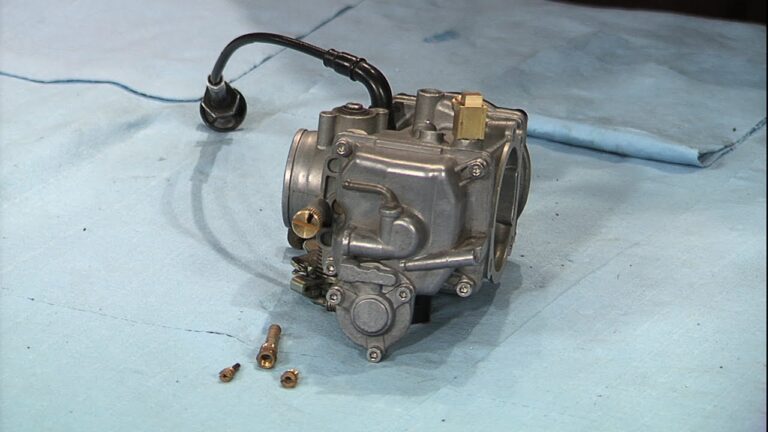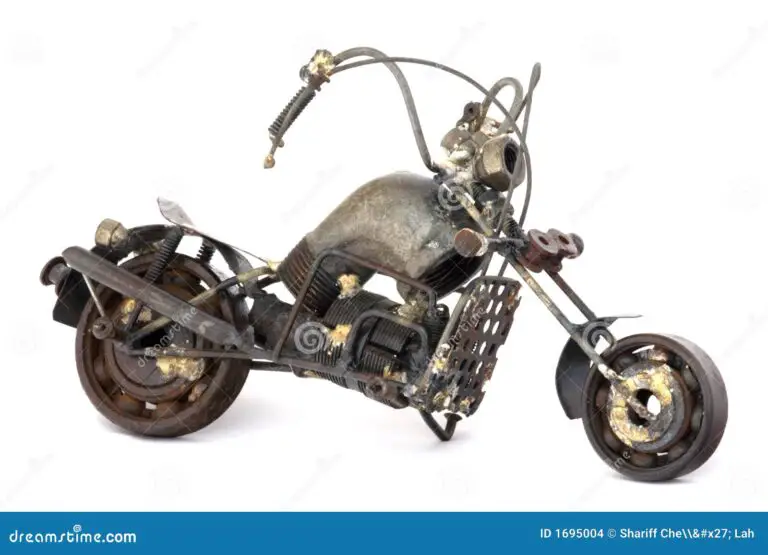Different Types of Motorcycle Helmets
Motorcycle helmets come in various types. Let’s explore the introduction to these unique options!
- Full-face helmets: Covering your face completely, these helmets prove that fashion isn’t a priority when you ride a motorcycle.
- Open-face helmets, also called 3/4 helmets, protect the head but leave the face open.
- Half helmets only cover half of the head and are recommended for low-speed rides.
- Modular helmets are a blend of full-face and open-face helmets.
- Dual-sport helmets are suitable for adventurous riders and have a sun peak and ventilation.
- Last but not least, off-road or motocross helmets are designed for off-road riding and provide great ventilation.
Fun Fact:
In the early 1900s, aviator-style leather caps were popularly worn as helmets.
It wasn’t until the mid-20th century that protective shells made of materials like fiberglass and polycarbonate became widespread. This revolutionized helmet safety!
Full-face helmets
Full-face helmets provide the highest level of protection. A transparent visor protects from debris, wind and UV rays. Vents can be adjusted for airflow and comfort.
These helmets reduce wind noise and their streamlined shape decreases drag at high speeds. They are suitable for various riding styles, like street biking, touring and racing.
Full-face helmets also seal out external noise while allowing unrestricted communication.
Studies show they reduce the risk of head injury by 50% compared to other helmet types. Modular helmets are the perfect choice for those who want to look like a superhero without taking off their entire head.
Modular helmets
Let’s look at some key aspects of modular helmets in table form:
| Features | Advantages |
|---|---|
| Hinged chin bar | Easily switch from open-face to full-face |
| Removable liner | Easily clean and maintain |
| Sun visor | Protect against glare |
| Efficient airflow | Improved ventilation |
| Weight | Heavier than other types |
Plus, these helmets often have communication systems built-in. This lets riders stay connected while on the road. They also give good peripheral vision and a wide field of view, making roads safer.
Pro Tip: Check that the modular helmet meets safety standards and fits well for optimal safety and comfort.
Open-face helmets: For those who want to feel the freedom of riding a motorcycle and get a firsthand taste of the world’s finest bugs.
Open-face helmets
Half helmets offer a sense of freedom to riders, as they provide the closest protection to a motorcycle helmet while allowing one to feel the wind in their hair.
They are lightweight and comfortable, providing good ventilation to keep the rider cool during hot weather.
Moreover, half helmets provide a wide field of vision, enabling greater awareness of road conditions and potential hazards.
Some come with additional features like built-in sun visors or Bluetooth communication systems for added convenience and safety.
However, these helmets offer less protection compared to full-face helmets, since they leave the face exposed. Riders should consider their personal preferences and riding style when choosing a helmet.
To ensure optimal safety, riders opting for half helmets should:
- Opt for a model with a retractable sun visor or wear sunglasses/goggles for eye protection.
- Choose a well-fitting helmet that provides proper coverage without compromising comfort.
- Consider adding a detachable chin guard or face shield for enhanced protection during longer rides or in unfavorable weather conditions.
- Regularly inspect their helmet for any signs of wear and tear.
- Wear other protective gear like armored jackets, gloves, and knee guards to minimize the risk of injuries in case of an accident.
By following these suggestions, riders can strike a balance between comfort and safety when opting for half helmets. Remember, your choice of helmet plays a crucial role in ensuring your overall safety on the road.
Half helmets
| Features | Description |
|---|---|
| Design | Half helmets are sleek and compact. They only cover the top half of the head. |
| Protection | They have a hard outer shell made of durable materials, offering impact resistance. |
| Ventilation | Vents provide airflow, keeping riders cool. |
| Snap-on Visors | Some have snap-on visors for sun, dust, and debris protection. |
| Retention System | Adjustable straps and buckles keep the helmet secure. |
Unique Feature:
Half helmets provide a sense of freedom and connection with the surroundings. You can experience the best of both worlds – style and protection!
Invest in a high-quality half helmet today to ride confidently and enjoy versatile protection. Why choose between adventure and danger when you can have both with a dual sport helmet?
Dual sport helmets
Dual sport helmets offer versatility – they can be converted from full-face to off-road with the removal of a face shield.
They come with a large visor for visibility, a peak to deflect debris, and adjustable ventilation for comfort. The outer shell is made from durable materials like polycarbonate or fiberglass for high-impact resistance.
Pro Tip: Consider one with adjustable ventilation options for long rides in varying weather conditions. Protect your head and don’t let dirt and dents ruin your day – get an off-road helmet!
Off-road helmets
When it comes to off-road helmets, lightweight materials like carbon fiber or polycarbonate are used.
This ensures riders don’t feel heavy while adventuring. Plus, extended visors protect eyes from debris, branches, and sun glare. For optimal airflow, these helmets come with enhanced ventilation systems.
Plus, removable and washable inner liners make maintenance and hygiene easier after long hours of riding. Some models even have communication systems for staying in touch with other riders.
Pro Tip:
Prioritize safety certifications like DOT or ECE when selecting your helmet. These standards guarantee that your helmet meets all the necessary safety requirements.
However, the only feature I consider when choosing a motorcycle helmet is if it matches my black leather jacket.
Features to consider when choosing a motorcycle helmet
In a world focused on safety, choosing the right motorcycle helmet features is essential. What should you consider?
- Safety: Start with safety. Look for helmets that meet or exceed standards such as DOT certification.
- Fit: Make sure the helmet fits your head snugly without being too tight or loose.
- Type: Choose the type that suits your style and preferences. Options include full-face, open-face, modular, and half helmets.
- Visor: The visor should offer visibility and protection from wind, dust, and debris. Plus, an anti-fog coating is a must.
- Comfort: Lastly, select a helmet that provides comfort. Look for features like removable padding, ventilation systems, and adjustable straps.
Moreover, some helmets come with Bluetooth communication systems. And you can customize it with custom designs or graphics.
My colleague John Reynolds is a great example. He understands the importance of safety. One day, he encountered heavy rain while riding his bike on a busy highway. His waterproof helmet with superior visibility features saved him.
Choose a helmet that not only protects you but also enhances your riding experience. Prioritize safety!
Benefits of wearing a motorcycle helmet
A motorcycle helmet offers many advantages that can’t be overlooked. Here are a few of them:
- Protection: It can help shield the head in a crash, decreasing the danger of major head wounds.
- Safety: Putting on a helmet boosts overall safety by lessening the force of falls and crashes.
- Greater Visibility: Some helmets feature reflective surfaces or bright colors, making it simpler for other drivers to see motorcyclists on the road.
- Noise Reduction: Helmets also act as a barrier against loud wind noise, protecting ears from long-term exposure to loud sounds.
Plus, there are special elements that make helmets important. Such as one’s riding style, weather conditions, and individual tastes when it comes to helmet design and fit.
The National Highway Traffic Safety Administration (NHTSA) found that using a motorcycle helmet can reduce the risk of fatal head injuries by around 40%.
But, donning the wrong helmet is like trying to stop a storm with an umbrella – it might offer some protection, but you’re still gonna get blown away!
Conclusion and final thoughts on the importance of wearing the right helmet for motorcycle safety
The right helmet is vital for motorcycle safety. It can protect riders from head injuries, reduce fatalities, and boost road safety. Also, it is important to pick a helmet that fits well and meets safety standards.
Various types of helmets are on the market. Full-face helmets provide maximum protection, covering the whole head and face. They are preferred by professional riders and those who prioritize safety.
Open-face helmets offer less coverage but better visibility and airflow. These helmets are often chosen by urban riders and scooter fanatics who want comfort and safety.
Modular or flip-up helmets have features of both full-face and open-face helmets. Riders can flip them up or down as they want, without compromising safety.
Motocross helmets are made for off-road riding. They come with a bigger visor for goggles, an extended chin guard, and extra ventilation for dirt riding.
In the late 1960s, helmet laws were created to reduce motorcycle-related deaths. Research has proved that wearing helmets drastically decreases the chances of severe head injury or death in motorcycle accidents.
FAQs
1. What are the different types of motorcycle helmets available?
There are several types of motorcycle helmets available, including full-face helmets, open-face helmets, half helmets, modular helmets, off-road helmets, and dual-sport helmets.
2. What is a full-face helmet?
A full-face helmet covers the entire head and provides the most protection. It features a chin bar and a face shield, offering protection to the face, head, and neck.
3. What is an open-face helmet?
An open-face helmet, also known as a three-quarter helmet, covers the top, sides, and back of the head but leaves the face exposed. It typically has a visor or a face shield for eye protection.
4. What is a half helmet?
A half helmet, also called a brain bucket, covers only the top of the head, leaving the face, ears, and neck exposed. It provides minimal protection and is mainly used for cruising or low-speed rides.
5. What is a modular helmet?
A modular helmet combines features of both full-face and open-face helmets. It has a hinged chin bar that can be flipped up, allowing the rider to easily switch between full-face and open-face configurations.
6. What is an off-road helmet?
An off-road helmet, also known as a motocross helmet, is designed for use in off-road riding and racing. It features an extended visor, an elongated chin bar, and enhanced ventilation to handle dirt and debris.




